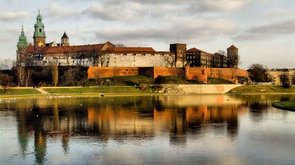Action TU1208
Civil Engineering Applications of Ground Penetrating Radar
COST Success Story
Training School on Applications of Ground Penetrating Radar in Urban Areas: the Sensitive Case of Historical Cities - Cracow, Poland, May 5-7, 2015
The COST Action TU1208 is organising a Training School on Applications of Ground Penetrating Radar in Urban Areas: the Sensitive Case of Historical Cities. This course, especially conceived for early-career investigators and PhD students, will be held on May 5-7, 2015, in the former capital of Poland, Cracow, a thousand-year-old centre for culture, arts and science. The school will be kindly
hosted by the Cracow University of Technology, an outstanding University established in 1834. We will have the unique opportunity to perform Ground Penetrating Radar (GPR) measurements in the Wawel Cathedral, in cooperation with the Polish company Restauro and the Greek company Geoservice: we very much look forward to this exciting experience. The Wawel ensemble, including the Royal Castle, the Wawel Cathedral and other monuments, is perched on top of the Wawel hill immediately south of the Cracow Old Town and is by far the most important collection of buildings in Poland.
Introduction to the School
Over the centuries, city centres have been continuously changing, developing and adapting to the requirements of society, architectural planning and advancing technology. Under the pressure of urbanisation, many cities and towns have significantly expanded and the limited space in their centres has been exploited more intensively. The shallow subsurface of historical cities is nowadays a very complicated scenario including reams of pipes, cables, rubble, bars and slabs of reinforced concrete, backfilled excavation trenches and pits, cellars, wells, cavities, tunnels, graves, walls and foundations of former houses, churches, monasteries, town fortifications, along with several other modern and ancient structures and manufacts. Underneath the asphalt layer of city roads and the paving stones of town squares, layers of sand and gravel are criss-crossed with modern fibre optic and electricity cables, whereas century-old sewer pipes are mixed with the debris of brick buildings. In layers with high levels of soil humidity or large clay content, organic materials such as wood, leather and bones can be preserved in good condition for centuries. Urban soil layers, as well as waste and latrine pits, contain plant macrofossiles which convey exciting information about the menu and habits of our ancestors, the local flora and the spreading of exotic plants. Many European cities have initially been made up to a large extent of houses built of organic materials, predominately wood. Later on, demands for fire safety as well as fashion promoted the use of stones and bricks as building materials. Subsequently, concrete has been extensively used. For the prospection of such a diversified, multilayered, intricate and complex underground environment, both for arcahaelogical and civil-engineering purposes, the most promising non-destructive geophysical method is GPR. As a matter of fact, GPR measurements result in the largest amount of data of all commonly employed near-surface methods, providing detailed three-dimensional information about the subsurface. GPR is a powerful tool not only for the prospection of subsurface but also for the non-invasive testing of historical buildings, fountains, historical bridges, sculptures, frescoes, pottery and other objects collected in museums: it can give information about their state of preservation, it can significantly help to address a restoration project properly, and sometimes it can also help to achieve information of historical interest (for example, about the presence of walled rooms, crypts, hypogeum rooms, tombs, hidden frescoes, and so on).
The school will present an insight into the challenges, advantages and potential of GPR prospection in historical cities. Data examples from urban historical centres will be presented and discussed. An introduction to electromagnetic modelling of GPR will be provided: indeed, simulations of GPR scenarios are extremely useful to understand how buried target structures get translated into recorded reflection profiles, interpret radargrams, understand the limitations of the GPR technique, highlight its capability, and find out whether in a certain environment GPR can or cannot function optimally. To widen the perspective, the school will include an introduction to urban remote sensing, describing how high-resolution satellite imagery or alternative sources of image date (such as high-resolution SAR and LIDAR) can be exploited for urban feature extraction, to analyze population, energy use, and other aspects of the urban environment.
The Coordinators of the Training School are Prof. Lidia Zakowska (Cracow University of Technology, Poland, TU1208 WG Member), Prof. Andrea Benedetto ("Roma Tre" University, Italy, TU1208 Editiorial Coordinator), and Dr. Lara Pajewski ("Roma Tre" University, Italy, Chair of the COST Action TU1208).
The Trainers are Ms. Pepi Avlonitou (Geoservice, Greece), Prof. Andrea Benedetto, Mr. Klisthenis Dimitriadis (Geoservice, Greece, TU1208 WG Member), Prof. Jerzy Karczewski (AGH University of Science and Technology, Polish Akademia Górniczo-Hutnicza im. Stanisława Staszica, Poland, TU1208 WG Member), Mr. Yannis Konstantakis (Geoservice, Greece TU1208 WG Member), Prof. Sébastien Lambot (Université catholique de Louvain, Belgium, TU1208 MC Member), Dr. Lara Pajewski, and Prof. Lidia Zakowska.
Class Scheduling (Please note this is a provisional scheduling, still subject to change)
Tuesday, 5 May 2015
Time | Trainer | Activity |
08:30 - 09:30 | Registration. | |
09:30 - 10:15 | Local Authorities. School Coordinators. | Welcome by Authorities. Introduction to the School. Short presentation of Trainees and Trainers. |
10:15 - 11:00 | L. Pajewski | On COST and the Action TU1208 "Civil Engineering Applications of Ground Penetrating Radar" |
11:00 - 11:30 | Tea & Coffee Break | |
11:30 - 13:00 | L. Zakowska | Historical downtowns: challenges and opportunities in building and construction activities. |
13:00 - 14:00 | Lunch | |
14:00 - 15:30 | A. Benedetto | Advantages and potential of GPR in historical cities: prevention and inspection. |
15:30 - 16:00 | Tea & Coffee Break | |
16:00 - 18:00 | S. Lambot | GPR basic principles. Electromagnetic properties of media. GPR systems and surveys. |
19:30 | Common dinner |
Wednesday, 6 May 2015
Time | Trainer | Activity |
09:00 - 10:30 | K. Dimitriadis and Y. Konstantakis | Case studies 1 - Archaelogical prospection with GPR in urban areas. |
10:30 - 11:00 | Tea & Coffee Break | |
11:00 - 13:00 | CUT Trainers | Visit to CUT Geotechnical Laboratory |
13:00 - 14:00 | Lunch | |
14:00 - 15:30 | L. Pajewski | Introduction to electromagnetic modelling of GPR. Exercise: building a model of the Sant'Angelo Bridge in Rome, by using GprMax and E2GPR. |
15:30 - 16:00 | Tea & Coffee Break | |
16:00 - 17:00 | M. Musiela | Restoration activities carried out in historical cities by the Polish company Restauro. |
17:00 - 18:00 | Transfer from CUT to the Wawel Cathedral. | |
18:00 - 21:00 | M. Musiela, K. Dimitriadis, Y. Konstantakis | GPR measurements in the Wawel Cathedral, in cooperation with Restauro and Geoservice. |
Thursday, 7 May 2015
Time | Teacher | Activity |
09:00 - 10:00 | K. Dimitriadis and Y. Konstantakis | Case studies 2 - GPR testing of ancient statues. |
10:00 - 11:00 | S. Lambot | Case studies 3 - GPR localisation of cables/tubes in urban areas and water leak detection. |
11:00 - 11:30 | Tea & Coffee Break | |
11:30 - 13:00 | T. Golebiowski/J. Karczewski | Case studies 4 - Title TBD |
13:00 - 14:00 | Lunch | |
14:00 - 15:00 | L. Pajewski | Urban remote sensing. |
15:00 - 16:00 | All | Summary and Discussion. |
16:00 - 18:00 | All | Tea & Coffee Break Poster session (with posters prepared by Trainees, presenting their research activities) |
Training School Grants
for PhD Students & Early-Career Investigators
The COST Action TU1208 is proud to offer free courses: this school does not have a registration fee.
Furthermore, the COST Action TU1208 is offering 20 grants of 450,00 EUR to PhD Students and Early-Career Investigators (ECIs) willing to attend the school. COST Training School grants represent a contribution to cover travel, meal and accommodation expenses. The deadline for submitting grant applications was April 24, 2015 (17:00 CET).
Some local Trainees, in addition to the 20 granted Trainees and to some not-granted Trainees, already registered to the school. You are still welcome to join us! To register, please send an email to school@gpradar.eu. Registrations will be closed on May 3rd.
List of Granted Trainees:
1) Gabriela Arambulo Rodriguez (Belgium, PhD Student, TU1208 Member)
2) Luigi Capozzoli (Italy, ECI)
3) Luca Bianchini Ciampoli (Italy, PhD Student, TU1208 Member)
4) Teja Ceru (Slovenia, PhD Student)
5) Alexandru Chelmus (Romania, PhD Student)
6) Margarita Chizh (Russia, PhD Student)
7) Martin Duffy (Ireland, PhD Student)
8) Łukasz Kosno (Poland, PhD Student)
9) Melda Kucukdemirci (Turkey, ECI)
10) Antonio Pelegrina Jimenez (Spain, researcher, TD1401 MC Member & TD1201 (COSCH) WG Member)
11) Igor Prokopovich (Russia, PhD Student, TU1208 MC Observer)
12) Santo Prontera (Italy, PhD Student, TU1208 WG Member)
13) Maria Carmela Raguso (Italy, PhD Student)
14) Tsvetelina Shalamanova (Bulgaria, PhD Student)
15) Arlinda Sheqiri (Italy, PhD Student)
16) Łukasz Sławski (Poland, PhD Student)
17) Nikos Spanoudakis (Greece, ECI, TU1208 WG Member)
18) Fabio Tosti (Italy, ECI, TU1208 WG Member)
19) Malgorzata Wutke (Poland, researcher)
20) Besian Xhagolli (Albania, researcher)
Received applications: 32.
Gender balance: 40% female Trainees, 60% male Trainees (100% of applications coming from female Applicants granted).
COST Inclusiveness Countries: 35%; other COST Countries: 50%; Near Neighbour Ccountries: 15% (100% of applications coming from Inclusiveness Countries granted).
Early-Career Investigators (ECI): 20% (100% of applications coming from ECI granted).
After the School, the Granted Trainees will be sorted in groups. Each group will have to prepare a joint report. Detailled instructions for the preparation of the reports and a template will be provided by the School Coordinators during the school.
The Members of the COST Action TU1208 wish to express gratitude to the COST Association for approving our additional-funding request. Thanks to this additional funding, we are able to organise and offer this course.
For information concerning COST Action TU1208 and TU1208 GPR Association, please take contact with the Chair of the Action and President of the Association, Prof. Lara Pajewski. From 4 April 2013 to 3 October 2017, this website was supported by COST, European Cooperation in Science and Technology - COST is supported by the EU RTD Framework Programme Horizon2020. TU1208 Members are deeply grateful to COST for funding and supporting COST Action TU1208. As of 4 October 2017, this website is supported by TU1208 GPR Association, a non-profit association stemming from COST Action TU1208.



